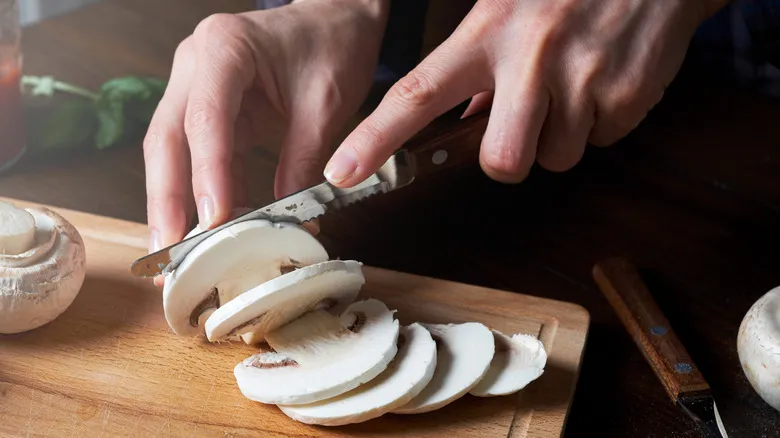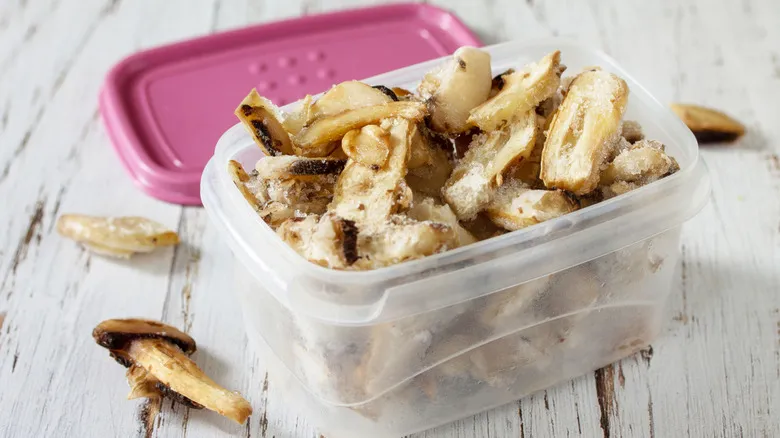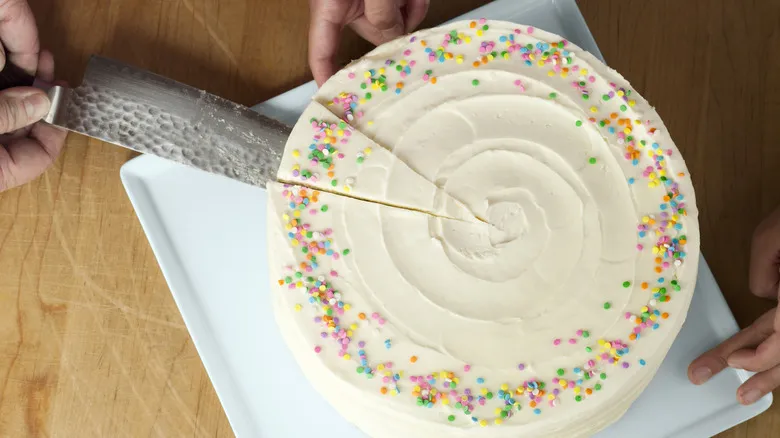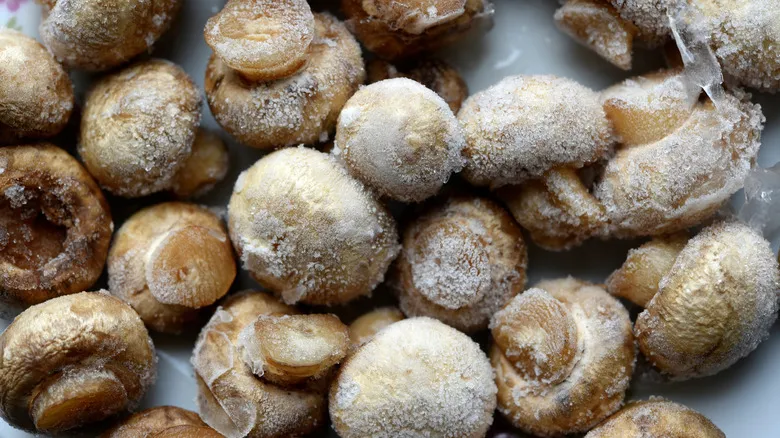What happens to mushrooms when frozen?

Freezing is an effective method for prolonging the shelf life of leftover mushrooms for up to a year. However, when you choose to thaw them—whether in the refrigerator overnight or at room temperature—the first thing you'll observe is that they lose their original firmness and become soggy.
This occurs for several reasons, with the most significant being their high water content. Mushrooms are composed of about 92% water, so when they are defrosted, the same principle that causes frozen cucumbers to become mushy applies here. The ice crystals that form during freezing damage their cell walls, resulting in a slimy and soft texture once thawed.
While their flavor remains relatively consistent, mushrooms do lose some of the richness they had prior to freezing. They tend to develop a milder taste and may lose some of their earthy notes, along with a potential change in color, often becoming slightly darker. Fortunately, these alterations are usually subtle, and you can still incorporate frozen mushrooms into stir-fries, soups, or as toppings for pizza.
Another change that occurs with frozen mushrooms is a reduction in certain nutrients. Although they retain most of their nutritional value, the levels of water-soluble vitamins (such as vitamins B and C) can diminish, particularly after being stored for more than six months.
How to properly freeze mushrooms

Whether you're planning to freeze your mushrooms for a pepperoni and mushroom pizza pasta or that mushroom risotto you've been longing for, proper storage is essential. Simply tossing them into the freezer fresh from the market isn't the best approach. Instead, it's important to cook them first.
The key rule: Never soak mushrooms in water! You want to avoid them soaking up excess moisture and becoming mushy, right? Ideally, use a damp paper towel to gently clean them. Then, the simple trick is to sauté them before freezing. Just a drizzle of olive oil or a tablespoon of butter in a frying pan will do the trick, and they'll be ready to freeze in just a few minutes.
Blanching is another effective method, as it helps preserve the mushrooms' natural flavor and keeps their nutrients largely intact. After boiling them for a couple of minutes, plunge them into ice water to halt the cooking process. Once that's complete, spread them out on a sheet of baking paper and freeze them – a technique known as flash-freezing. This method creates smaller ice crystals within the mushrooms, helping to maintain their cell structure and texture.
Recommended

Ina Garten's Tip For Turkey Lasagna Fixes A Classic Mistake

The Worst Mistake You're Making When Cutting Cake

Crispy Carrot Chips Are The Two-Ingredient Snack To Satisfy Your Crunch Craving

Crispy Ketchup Rice Is Your New Favorite Way To Use Up Leftovers
Next up

